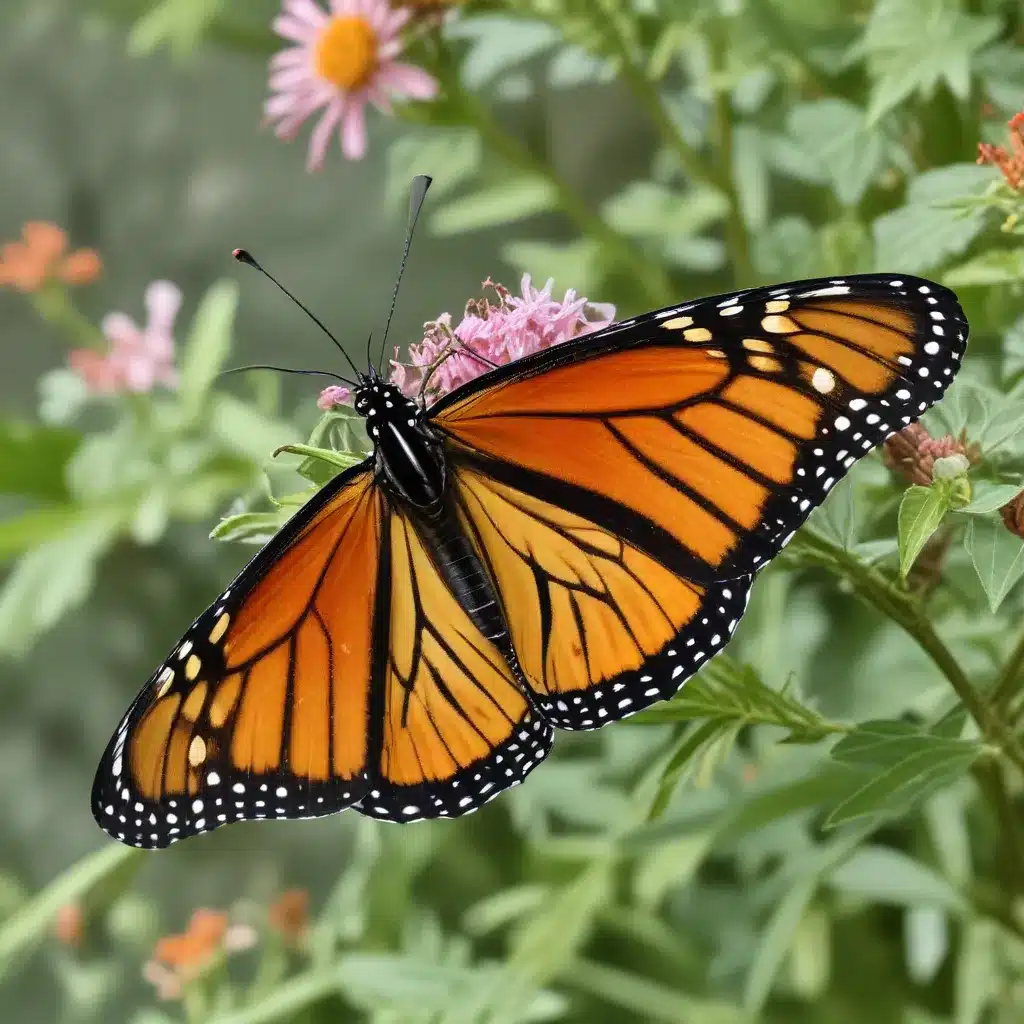
As a farm educator at Crooked Pines Farm, I’m thrilled to share the wondrous life cycle and migration patterns of the iconic monarch butterfly. These magnificent insects provide endless opportunities for kids to explore the natural world and learn about the amazing transformations that occur all around us.
Monarch Butterfly Life Cycle
One of the most captivating aspects of monarchs is their complete metamorphosis, which involves the egg, larva (caterpillar), pupa (chrysalis), and adult stages. It all begins when a female monarch lays her tiny, pinhead-sized eggs – usually a single egg per milkweed plant. After about 4 days, the egg hatches, and a tiny, pale green caterpillar emerges.
Egg Development
These newborn monarch larvae are almost translucent, with no distinct markings. As they grow and molt (shed their skin), they develop the iconic black, yellow, and white stripes that make monarch caterpillars so recognizable. Over the course of 9-14 days, the caterpillar goes through 5 larval instars, shedding its skin each time it outgrows the old one.
Caterpillar Stages
During this voracious feeding stage, the caterpillar consumes milkweed leaves, growing to almost 2,000 times its original size! As it nears pupation, the late fifth instar larva will often chew a notch in the leaf stem, causing the leaf to hang vertically – a behavior that may help conceal the pupa.
Chrysalis Formation
When ready to pupate, the caterpillar spins a silk pad and attaches itself upside-down, forming a bright green chrysalis. Inside this protective shell, the incredible process of metamorphosis occurs, with the caterpillar’s body completely transforming into the adult butterfly over 8-15 days.
Monarch Butterfly Anatomy
Monarchs, like all butterflies and moths, have a body divided into three main parts: the head, thorax, and abdomen. The adult’s large, compound eyes, long proboscis (or “tongue”), and two pairs of colorful, scaled wings are all essential adaptations.
External Features
The antennae and sensory palps on the head help monarchs detect scents and navigate, while their six legs (with tarsi that can “taste”) allow them to grip flowers and foliage. Notably, male monarchs have a small black spot on each hindwing, which contains specialized scales that produce courtship pheromones.
Internal Systems
Internally, monarchs have a complex network of tracheae that distribute oxygen throughout their bodies, and a simple digestive system well-suited for their nectar-based diet. During the larval stage, their bodies undergo remarkable changes, with the wings and other adult structures developing from tiny clusters of cells.
Adaptations
One of the monarch’s most remarkable adaptations is its ability to sequester toxins from milkweed plants, making itself unpalatable to predators. This aposematic coloration advertises the butterfly’s toxicity, discouraging would-be hunters.
Monarch Butterfly Habitat
Monarchs have a vast, continent-spanning range, with distinct breeding and overwintering grounds. In the spring, the first generation of monarchs emerges in the southern United States and northern Mexico, laying eggs on milkweed plants as they gradually move northward.
Breeding Grounds
Subsequent generations continue this northward expansion, with eggs being laid throughout the eastern United States and southern Canada during the summer months. Milkweed species like common milkweed (Asclepias syriaca), swamp milkweed (A. incarnata), and butterfly weed (A. tuberosa) are critical host plants for these developing caterpillars.
Overwintering Sites
The final generation of the year, born in late summer and early fall, undergoes a remarkable transformation. Instead of reproducing immediately, these monarchs enter a state of reproductive diapause, delaying maturity and instead focusing on the arduous journey to their overwintering grounds.
Eastern monarchs migrate thousands of miles to central Mexico, while their western counterparts head to coastal California. Here, the butterflies cluster by the millions in the sheltered groves of fir and pine trees, waiting out the winter until conditions allow them to return north and begin the cycle anew.
Monarch Butterfly Behavior
Monarchs exhibit a range of fascinating behaviors, from their intricate feeding habits to their remarkable migratory patterns. As adults, they primarily subsist on the nectar of flowering plants, using their long, straw-like proboscis to extract the sweet liquid.
Feeding Habits
When it comes to mating and reproduction, monarchs are equally captivating. Females can lay up to 500 eggs over the course of a few weeks, carefully depositing them one-by-one on milkweed plants. After emerging from the chrysalis, the adults will not mate until they are 3-8 days old, often remaining paired for up to 16 hours during the mating process.
Mating and Reproduction
The most extraordinary aspect of monarch behavior, however, is their annual migration. The final generation of the year, born in late summer and fall, is the only one that undertakes this lengthy journey. Guided by an innate compass, these monarchs travel thousands of miles to the same overwintering sites their ancestors visited, despite never having been there themselves.
Migratory Patterns
At Crooked Pines Farm, we’re fascinated by the monarch’s incredible life cycle and migratory patterns. Throughout the spring, summer, and fall, we encourage our young visitors to explore our milkweed-rich gardens and prairies, searching for eggs, caterpillars, and even the adult butterflies as they pass through on their way to and from Mexico.
By observing these remarkable insects up close, children can develop a deeper appreciation for the natural world and the importance of conserving critical habitats like the ones we’ve established here on the farm. So come on out, grab a magnifying glass, and get ready to be amazed by the wonders of the monarch butterfly!


